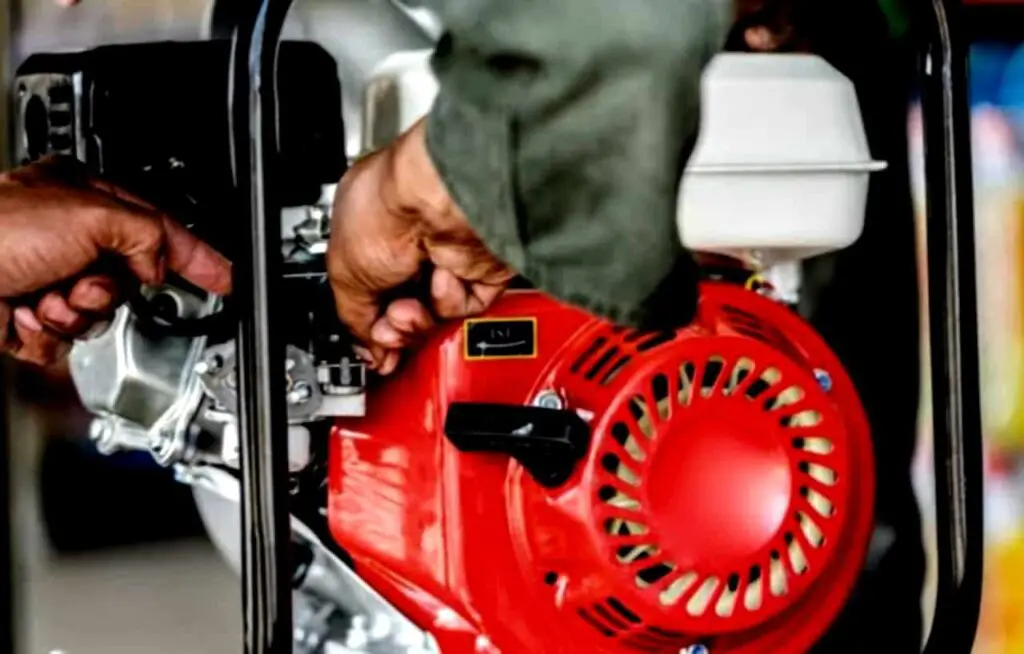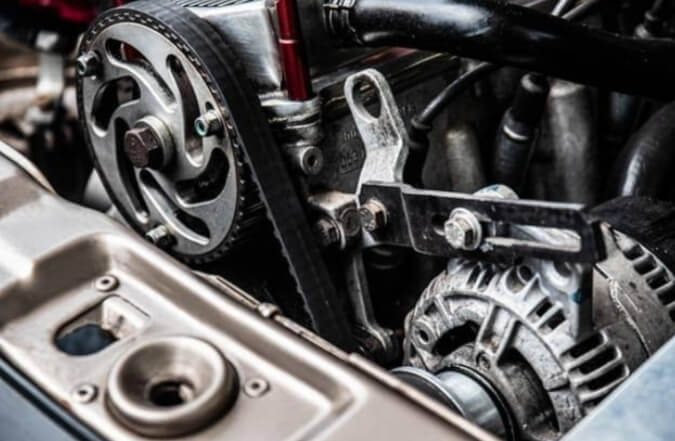As an Amazon Associate, we earn from qualifying purchases. This does not affect the price you pay or the quality of the products you buy. For more information, please read the full affiliate disclosure here.
Residual magnetism refers to the magnetic field that remains in the generator’s electromagnets even after the excitation power is turned off. This remnant magnetism acts as a foundation for generating electricity when the generator is operational.
When it comes to the production of optimal voltage output from generators, the residual magnetism is really important in such a way that without it, there won’t be any voltage output, and even if there’s a little of it, the generator may struggle to reach its full output capacity, resulting in inefficient power generation.
However, there are instances where generators may completely lose their residual magnetism. Hence, Generator Hacks will explore the reasons for the loss of residual magnetism and guide you through various methods to restore it effectively.
What Causes the Loss of Residual Magnetism in a Generator?
Several factors contribute to the loss of residual magnetism in generators. Among the factors are:
- Extended periods of inactivity.
- Prolonged storage.
- Overheating.
- an electric fault.
When the generator has been in storage or has been kept inactive for more than 10 years, it can lose its residual magnetism. Additionally, electrical faults can also cause it, such as the generator’s rotor losing the small amount of magnetic field retained.
Speaking with an electrician, he said:
“Residual magnetism is usually common among portable generators, especially when they have been kept disorganized for a long time and not maintained or run during those periods.”
While this problem is common among generators, especially portable ones, it has the same methods of fixing them, which we will discuss before the end of this article.
IMPORTANT READ: How to Store a Generator: Best Practices for Long-Term Storage
Tools and Equipment Required to Restore Residual Magnetism in a Generator
Before attempting to restore residual magnetism, gather the necessary tools and equipment to avoid getting yourself hurt. You will need the following tools:
- A fully charged 12-volt battery.
- Insulated gloves.
- A multimeter.
- And safety glasses to protect yourself during the process.
Without these tools, you will find it hard to restore the residual magnetism in your generator.
Trouble with your generator? Get expert personalized troubleshooting tips tailored for you alone directly to your email. Contact us now for reliable support and practical solutions. Let’s fix it together – reach out today!
How to Restore Residual Magnetism in Generator

There are two primary methods to restore residual magnetism in a generator, which include:
- Flashing using a fully charged battery.
- Flashing with AC voltage.
Let’s explore each of them:
Flashing the generator using a battery
When it comes to using a battery to revive the residual magnetism, you need a fully charged 12-volt battery and a multimeter. And when you get one, follow up with the steps below:
Step 1: Disconnect the generator. Before you attempt any restoration, ensure the generator is completely disconnected from the power source to avoid any accidents or damage to your appliance or equipment.
Step 2: Identify the polarities: Identify the polarities of the generator’s field winding to know which terminals require a connection. The terminals are the ones providing power to the generator outlet.
Step 4: Start the generator. You can either start the generator or connect the battery to the generator outlet. If you notice anything like a change in how the generator is humming, then the residual magnetism has been restored. However, you can also perform this step without the generator running. But here at Generator Hacks, that’s how we restore ours.
Step 3: Connecting the battery Connect a 12V DC battery to the appropriate field winding terminals (the generator’s outlet wire from the coil), observing the correct polarity. That’s what will restore the residual magnetism, whether the generator is running or not.
Here’s a video by Busted Knuckle explaining the process:
Step 4: Recheck for magnetism: Lastly, after a brief connection, disconnect the battery and recheck for residual magnetism using a multimeter or a visual inspection. You can either decide to run the generator to see if it produces any power or not. If the generator runs but produces no power and the residual magnetism is restored, check other factors like the AVR and capacitor to see if they might be the cause.
IMPORTANT READ: How to Measure Capacitance: 8 Steps
Flashing with AC voltage
Just like using a battery to flash the generator and restore the residual magnetism, this is the same way you are going to use AC voltage. In our case, we make use of a very good capacitor.
We connect two wires to the capacitor end and tap the two wires with an electrical current. In that case, joining the capacitor wires together will produce a spark. But without joining the wires, here are a few steps to follow with the capacitor immediately after you join it with an electrical current:
Step 1: Disconnect the generator. As always, prioritize safety and disconnect the generator from any power source.
Step 2: Prepare the power source: Set up a stable and reliable AC power source, ensuring it matches your generator’s voltage requirements.
Step 3: Connect the generator to the AC voltage. Carefully connect the generator to the AC power source while following the proper polarities, just like using your battery to flash the generator by touching it little by little.
Step 4: Verify magnetism: After you have connected the voltage and noticed some spark on the generator, check for the presence of residual magnetism using your multimeter.
However, if you don’t have any source of ac voltage like using the capacitor method, or a fully charged battery, you can also use a corded electric drill to restore residual magnetism in generator. The video below explain the process in details:
Precautions and Safety Measures
When working with generators and restoring residual magnetism, it is essential to prioritize safety. Here are some precautions and safety measures to consider:
- Safety gear: Always wear appropriate safety gear, including gloves, safety goggles, and non-conductive footwear, to protect yourself from potential electrical hazards.
- Disconnect the power source: Before conducting any maintenance or restoration work, make sure the generator is disconnected from the power source. This helps prevent any accidental electrical shocks or damage to your appliances.
- Avoid Overloading: Do not overload the generator beyond its rated capacity. Excessive load can damage the generator and compromise its residual magnetism.
Common Challenges and Troubleshooting
During the process of restoring residual magnetism, you may encounter certain challenges. Here are some common challenges and troubleshooting tips:
- Low voltage output: If the voltage across the field windings is low or insufficient, ensure proper connections and verify the power source’s voltage output. Check the generator speed to see if it’s running normally, as well as other factors like the AVR or capacitor that might cause it to produce a low voltage output.
- No voltage stabilization: If the voltage does not stabilize even after several attempts, check for loose connections or damaged field windings. In such cases, it is advisable to seek professional help or consult an electrician.
- Inadequate voltage build-Up: If the generator fails to build up enough voltage across the field windings, increase the excitation time gradually or consult the generator’s manual for specific instructions.
Regular Maintenance for Preserving Residual Magnetism
Restoring residual magnetism is not a one-time fix. To ensure optimal generator performance and preserved residual magnetism, regular maintenance is crucial. Here are some maintenance tips:
- Scheduled inspections: Conduct regular inspections of the generator’s components, including the field windings, to detect any signs of damage or wear.
- Cleanliness and lubrication: Keep the generator clean and free from dirt, dust, and debris. Lubricate moving parts as recommended by the manufacturer to prevent friction and ensure smooth operation.
- Regular testing: Perform periodic tests to check the generator’s residual magnetism and voltage output. This helps identify any potential issues early on.
Frequently Asked Questions
1: Can residual magnetism be restored without professional help?
Yes, restoring residual magnetism can be done without professional help, provided you follow the proper procedures and safety precautions. However, if you’re unsure or uncomfortable with the process, it’s always advisable to seek assistance from a qualified electrician.
2: What are the signs that indicate a generator lacks residual magnetism?
A generator lacking residual magnetism may fail to produce electricity even when running. Other signs include flickering lights, inconsistent power output (on and off), etc.
3. Can I use a car battery for flashing the generator?
Yes, a car battery with a 12 V DC output can be used to restore residual magnetism in a generator.
Final Thought
Restoring residual magnetism in generators is essential for ensuring their optimal performance and efficiency. By following the proper methods and precautions, you can successfully restore residual magnetism and keep your generator functioning at its best. Regular maintenance and testing are vital to preserve residual magnetism and prevent potential issues. By taking care of your generator, you can have a reliable source of electricity whenever you need it.
Share


